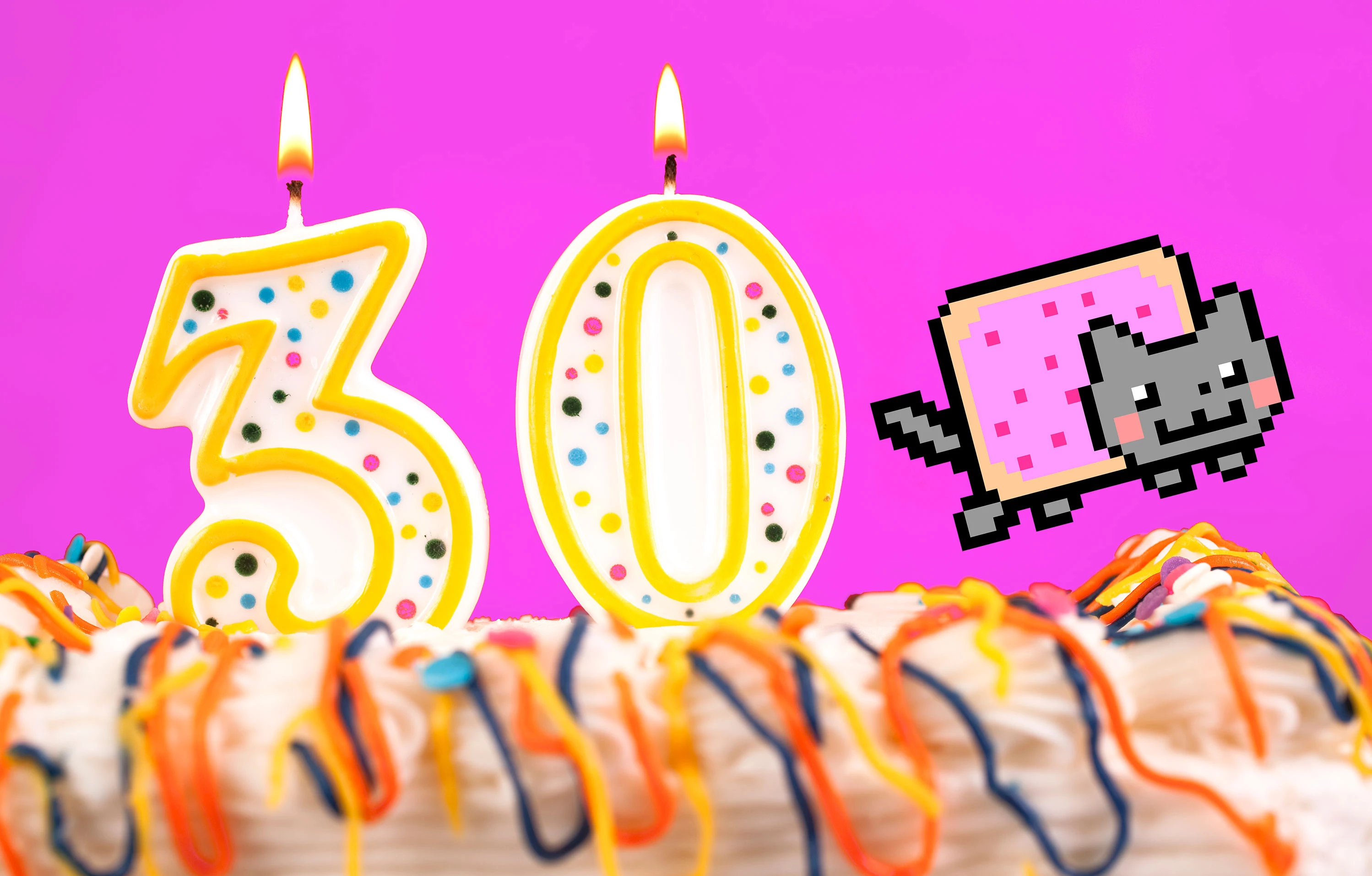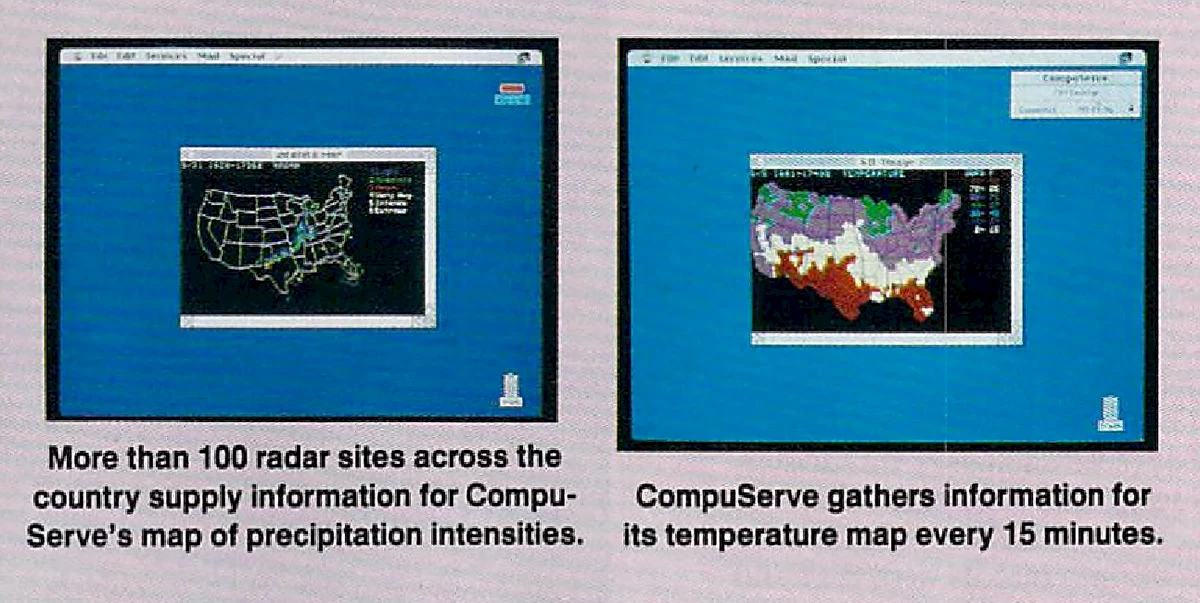At 30, GIF still rules the Web

The GIF image format — the proper pronunciation of which is still up for debate — is already 30 years old, and going stronger than ever!
Where does GIF come from?
Created in 1987 by a team of CompuServe developers directed by Steve Wilhite, the Graphics Interchange Format (GIF) predates the Web. Despite its venerable age and its limitations, not to mention the proliferation of newer image formats created since then (JPEG in 1992, PNG in 1996), GIF is still part of the overall picture, largely due to its easy-to-share animation capabilities.
Colourful weather forecasts
GIF was originally developed to provide colour images for CompuServe on-line services, for example to make their weather maps more attractive and easier to read. Of course, such images couldn’t be too heavy to download; weather forecasters can’t wait 20 minutes for their maps.

[Compute!, issue 124, December 1990, page 83.]
GIF uses one byte per pixel, cramming 256 possible colours (2^8) in a small package, which is further reduced by the Lempel–Ziv–Welch (LZW) compression algorithm, allowing for a compact file with no loss of quality (“lossless compression”). Considering the glacial speed of modems at the time — remember 9,600, 14,400 or 28,800 bauds? — a 256-colour palette was a perfectly reasonable, even enviable trade-off for lighter files. Especially since very few people at the time had displays with more than 256 colours, while many of us still worked on white, green, or amber monochromatic screens.
In 1989, GIF innovated by creating transparency, allowing, for example, the placement of logos over coloured backgrounds. GIF also had another thing going for it: interlacing. Thanks to this coding trick, image lines appeared gradually as the data downloaded, giving users something to look at while they waited for the full image to download on the slow connections of the time.
When, in 1993, NCSA Mosaic implemented the IMG tag to display images in Web pages, GIF became Webmasters’ format of choice: it was eminently accessible and interoperable, and it preserved crisp line art and clean character fonts, while reducing file size down to a minimum by restricting colour palettes; besides, it was the best format to create features like interface buttons.
The birth of Web animation
[Dancing Baby, 1996.]
As early as 1987, it was possible to save a series of images in a single GIF file to create animations, but there was no pause or repeat feature.
In 1989, Compuserve added an image display time adjustment feature for animations, allowing for more sophisticated yet economical animations. In 1995, Netscape released version 2.0 of its navigator, coinciding with Windows 95. Netscape Navigator offered a new GIF animation looping feature, allowing the replay of animations for any number of times, with zero meaning infinite. Though this was not part of format specification, other navigators adopted the feature, unleashing a tidal wave of never ending GIF animations all over the Web. The potential of the format did not escape the notice of advertisers, whose animated 468x60 banners became the bane of Internet users.
[Work In Progress, circa 1999.]
The advantage of GIF over other animation formats of the time was that it didn’t require the installation of plug-ins, since all navigators quickly adopted and supported the specification, and even outside-of-spec add-ons like the Netscape looping feature.
GIF becomes social
[Nyan Cat, 2011.]
Animated GIFs are the darlings of Web society. They are the mainstay of Internet culture, allowing users to express and illustrate virtually any idea or emotion through means that are way more fun than text or fixed images. Younger generations don’t even bother stating that a GIF is animated since, to them, GIFs are animations by definition. And animation is indeed the main use of GIFs today, other uses having been more or less supplanted by PNG. This said, many of the animations found today on sites such as Giphy are not in fact GIFs but rather MPEG-4 videos, to add to the confusion.
[Typing Cat, 2015.]
Riding the wave, Facebook introduced GIF support in Messenger in 2015, indicating that, in 2016, users had inserted a whopping 13 billion GIFs in their conversations. To celebrate GIF’s thirtieth birthday, Facebook decided to make GIFs accessible everywhere, including in page comments. Hence the new button next to the emoji and image buttons, supported by a powerful search engine. And of course, GIFs have always been a mainstay of sites like Twitter, Tumblr and Reddit.
But how do you pronounce it?
From the beginning, the pronunciation of “GIF” has been the subject of controversy. While virtually everyone pronounces it with a hard G, as in “guitar”, its creators have always decried this as heresy, insisting that it has a soft G, as in “giraffe”. An exhibit on the history of GIF which just opened at Gallery 151 in Manhattan includes a jar of “Gif” peanut butter, to visually illustrate “proper” pronunciation. Now it’s up to you to do the right thing!
[Salt Bae, 2017.]
